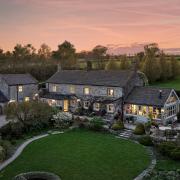Yorkshire’s depleted peatlands spell trouble for Yorkshire and the world but you can help Yorkshire Wildlife Trust save this vital landscape.

Anyone who knows Yorkshire will be familiar with the iconic peatlands, though you may call them uplands, moorlands, or simply the moors. They are miles and miles of lush, green land teeming with life; birds like golden plover and curlew trill among the rainbow mosses, and plants like cotton grass and the other-worldly carnivorous round-leaved sundew dance in the fresh breeze.
Or at least they should. Healthy peatlands are lush and green and saturated, buzzing with life. But today the majority are quite the opposite. In fact, 80% of Yorkshire’s peatlands are damaged to the point of disaster. Instead of green and wet, they are brown, cracked and lifeless.
Like the white cliffs of Dover or the great pine forests of Scotland, our peatlands are Yorkshire. They are our last great wild hope; landscapes that embody our great county, make us proud and resonate deeply within every Yorkshire heart. They are ancient and iconic landscapes and they are found almost nowhere else on earth. This alone deems them worthy of our protection, but in reality peatlands do so much more than most of us realise.
Nature’s safety blanket

Peatlands are landscapes made of peat, a kind of organic soil made from the accumulation of many layers (over tens of thousands of years) of decomposing plants. Healthy peatlands are wet peatlands, and all that water means that instead of rotting away, the layers of plants build up, eventually forming peat.
Healthy, wet peatlands are a natural flood barrier. They slow the flow of water from the hills and reduce the risk of flooding in both rural and urban areas. In contrast, degraded peatlands – dusty, brown, cracked and lifeless – let water wash straight off the hills and contribute to severe flash flooding such as those that devastated much of Yorkshire at the end of 2015.
Tim Thom, the Peat Programme Manager for Yorkshire Wildlife Trust, said: ‘Healthy peatlands are not just stunning landscapes and the true embodiment of the beauty of Yorkshire – they are nature’s safety blanket.
‘In 2015, the country spent millions of pounds clearing up after the terrible Boxing Day floods, and many people are still suffering from their effects. In contrast, we could spend a lot less now in restoring the peatlands and help prevent devastating flooding in the long-term.’

But that’s not all our peatlands offer. Did you know that, when healthy, the world’s peatlands hold more than twice the carbon locked up in all the world’s forests combined? Because the plants do not rot away, they do not release their carbon back into the atmosphere. So instead of contributing to climate change, healthy peatlands do the opposite, locking in carbon and storing it safely away beneath our feet.
Tim Thom added: ‘Restoring our peatlands to full health is one of the best things we can do here in Yorkshire to combat global climate change. Peatlands are such an underdog landscape – most people don’t have any idea of what they do, or can do, for us. Restoring the peatlands won’t just bring back beautiful landscapes for Yorkshire, it will help safeguard our future.’
What can be done?
Yorkshire’s peatlands, which took tens of thousands of years to form, have fallen into ruin in just a few short decades. But, as bad as they have been damaged, thankfully they are not yet past saving. Sensitive restoration by dedicated and experienced conservationists can bring our peatlands back from the brink. Yorkshire Peat Partnership is an umbrella organisation led by Yorkshire Wildlife Trust and is painstaking restoring thousands of hectares of peatlands in the Yorkshire Dales and North York Moors. To date, we have restored nearly 30,000 hectares – that’s the equivalent of over 42,000 football pitches.
But as much as we have achieved, there is still a long way to go. So much of our peatlands are on the point of ruin and need urgent help. That’s why Yorkshire Wildlife Trust is launching a nationwide Peatlands Appeal to raise money to help fund this vital restoration. Just £20 could restore 16m² of peatlands by replanting on bare peat to help make the land flourish once again.
The most iconic of Yorkshire landscapes, a natural flood barrier, a vital climate change defence and a haven for our precious wildlife – our peatlands have it all. There is so much our peatlands do for us and for wildlife, and they need our help. But we cannot save them without you. Be part of the solution, and donate whatever you can to Yorkshire Wildlife Trust and help us to give peat a chance: ywt.org.uk/give-peat-a-chance



























